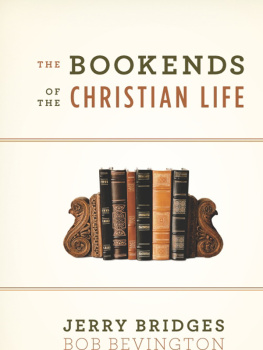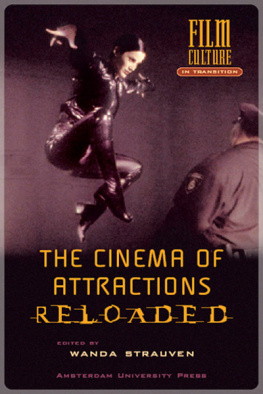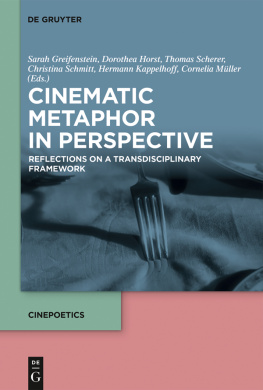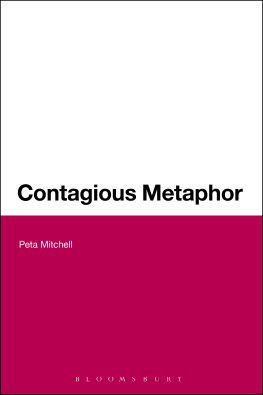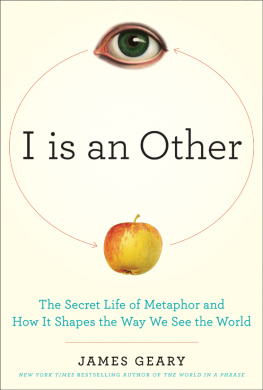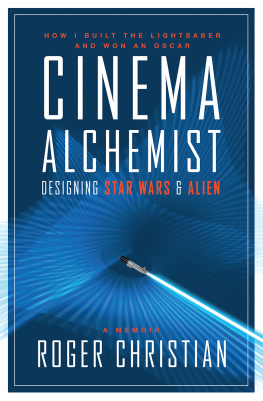
The Camera-Eye Metaphor in Cinema
The metaphor of camera as eye is fundamental to both everyday discussion as well as more academic theories of cinema: it is a pervasive metaphor through which we understand cinema on several levels. Christian Quendlers detailed study of the camera-eye metaphor is therefore a significant and erudite contribution to scholarship. But, more than this, Quendlers study takes a truly interdisciplinary approach to this metaphor. The Camera-Eye Metaphor in Cinema is not dogmatic in limiting itself to one or two theoretical positions; far from it. This book encompasses a broad array of theoretical approaches from the philosophy of mind to art theory, narratology, and gender studies. It therefore has a potentially wide appeal, not only in film studies, but also cultural and media studies more generally.
Warren Buckland, Oxford Brookes University, UK
This book explores the cultural, intellectual, and artistic fascination with camera-eye metaphors in film culture of the twentieth century. By studying the very metaphor that cinema lives by, it provides a rich and insightful map of our understanding of cinema and film styles and shows how cinema shapes our understanding of the arts and media. As current new media technologies are attempting to shift the identity of cinema and moving imagery, it is hard to overstate the importance of this metaphor for our understanding of the modalities of vision. In what guises does the camera eye continue to survive in media that is called new?
Christian Quendler is Associate Professor in the Department of American Studies at the University of Innsbruck, Austria. He is the author of From Romantic Irony to Postmodernist Metafiction and Interfaces of Fiction.
Routledge Advances in Film Studies
For a full list of titles in this series, please visit www.routledge.com
42 Spaces of the Cinematic Home
Behind the Screen Door
Edited by Eleanor Andrews, Stella Hockenhull, and Fran Pheasant-Kelly
43 Spectacle in Classical Cinemas
Musicality and Historicity in the 1930s
Tom Brown
44 Rashomon Effects
Kurosawa, Rashomon and Their Legacies
Edited by Blair Davis, Robert Anderson and Jan Walls
45 Mobility and Migration in Film and Moving Image Art
Cinema Beyond Europe
Nilgn Bayraktar
46 The Other in Contemporary Migrant Cinema
Imagining a New Europe?
Guido Rings
47 Horror Film and Affect
Towards a Corporeal Model of Viewership
Xavier Aldana Reyes
48 Indias New Independent Cinema
Rise of the Hybrid
Ashvin Immanuel Devasundaram
49 Early Race Filmmaking in America
Edited by Barbara Tepa Lupack
50 Film Text Analysis
New Perspectives on the Analysis of Filmic Meaning
Edited by Janina Wildfeuer and John A. Bateman
51 The Camera-Eye Metaphor in Cinema
Christian Quendler
First published 2017
by Routledge
711 Third Avenue, New York, NY 10017
and by Routledge
2 Park Square, Milton Park, Abingdon, Oxon OX14 4RN
Routledge is an imprint of the Taylor & Francis Group, an informa business
2017 Taylor & Francis
The right of Christian Quendler to be identified as author of this work has been asserted by him in accordance with sections 77 and 78 of the Copyright, Designs and Patents Act 1988.
All rights reserved. No part of this book may be reprinted or reproduced or utilized in any form or by any electronic, mechanical, or other means, now known or hereafter invented, including photocopying and recording, or in any information storage or retrieval system, without permission in writing from the publishers.
Trademark notice: Product or corporate names may be trademarks or registered trademarks, and are used only for identification and explanation without intent to infringe.
Library of Congress Cataloging-in-Publication Data
CIP data has been applied for.
ISBN: 978-1-138-91136-9 (hbk)
ISBN: 978-1-315-69273-9 (ebk)
Typeset in Sabon
by codeMantra
For Grace and Tobin
I wish to express my gratitude to the friends and colleagues who have helped me see through this project in various ways. I have greatly profited from all of the conversations, critical readings and engaging responses. I would particularly like to thank Sylwia Adam-Ross, Carole Baker, David Bordwell, Stefan Brandt, Warren Buckland, Rana Choi, Don Crafton, Liz Czach, Piet Defraeye, Elena del Rio, Thomas Elsaesser, Erwin Feyersinger, Alla Gadassik, Simon Grote, Eirik Frisvold Hanssen, Vinzenz Hediger, Adelheid Heftberger, Jim Hodge, Ian Jones, Jagoda Kamola, Barbara Klinger, Laura Marcus, Michelle Menzies, Helga Mitterbauer, J.J. Murphy, Kristine Nutting, Alexander Onysko, Thomas Pfau, Julie Rak, Brigitte Rath, Dan Reynolds, David Rodowick, Anna Sofia Rossholm, Elena Siemens, David Taylor, Mark Turner, Jennifer Wild, Daniel Winkler, Werner Wolf and David Womersley.
Much of this work was developed during my two-year stay in Chicago. I am very grateful to Tom Gunning and Yuri Tsivian for sponsoring my time at the Department of Cinema and Media Studies at the University of Chicago and to Scott Curtis for inviting me to the Department of Radio/Television/Film at Northwestern University. The faculty and students of both departments were a tremendous source of inspiration. I am thankful to the organizers of the Chicago Film Seminar and to Edward Branigan and Charles Wolfe for kindly inviting me to present my work in progress and for the continuing dialogue that it sparked. I would also like to thank the conveners and participants of the Seminar Scenes in the History of the Image at the National Humanities Center and the Wissenschaftskolleg zu Berlin. I extend my thanks to the Wirth Institute and to the Department of English and Film Studies at the University of Alberta for the valuable exchange and being such generous hosts.
I am fortunate to have great colleagues at the University of Innsbruck and am grateful for their advice and assistance: Tobias Aubck, Monika Datterl, Sebastian Donat, Doris Eibl, Georg Engel, Roberta Hofer, Mario Klarer, Cornelia Klecker, Johannes Mahlknecht, Maria Meth, Matthias Msch, Ursula Moser, Sabine Schrader, Thomas Schrder, Martin Sexl and Christian Stenico. I particularly thank Sonja Bahn, Gudrun Grabher and Hilde Wolfmeyer for their close reading of various versions and parts of the manuscript. I am grateful to the staff at Routledge, especially to Felisa Salvago-Keyes, Kathleen Laurentiev and Christina Kowalski.
I cannot forget to thank my family, which has grown over the course of this project, for their endless support: My parents, Helgard Gruber and Karl Quendler, my brother and his wife, Michael and Birgitta Quendler, my nieces and nephew, Hannah, Yannick, Fiona and Romy, my father- and brother-in-law, Royal and Andrew Carlson. I give my deepest thanks to my wife Grace Quendler and our son Tobin.
Some parts of this book have appeared elsewhere in modified form. revises my discussion of The Diving Bell and the Butterfly as well as Enter the Void that appeared in image & narrative (15.1) with the title Subjective Cameras Locked-in and Out-of-Body.



